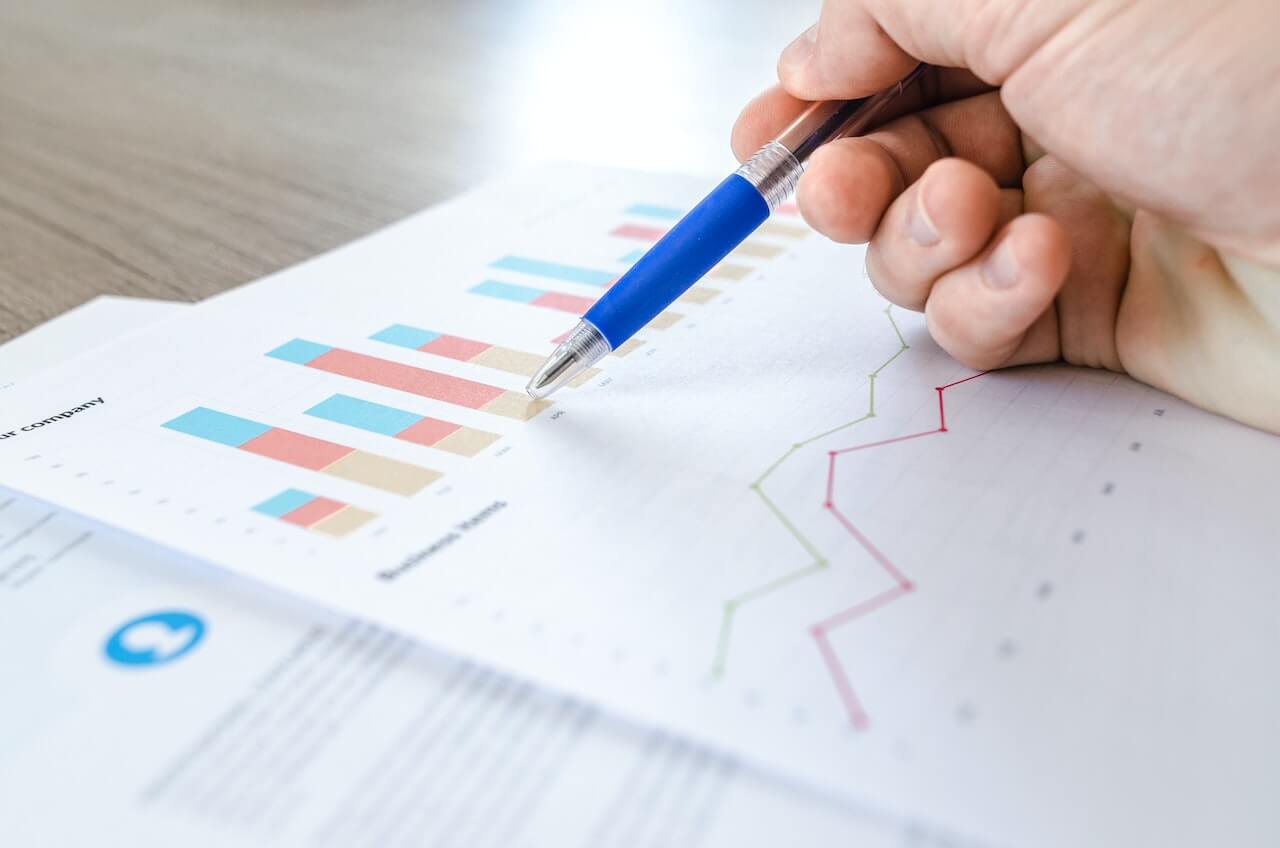When it comes to projects, the risk to reward ratio is key. Knowing how to develop and execute projects that give the best return with appropriate risks is essential for any business. In this blog post, we will discuss how to measure the risk to reward ratio of a project, how to develop projects that give high returns, and how to successfully execute them. With the right approach and knowledge, you can ensure that your projects deliver the highest returns.
Define Your Goal
A well-defined goal is essential so that projects give the best return with appropriate risks taken. For achieving high returns, you must identify potential risks in advance and take effective measures to reduce or avoid them. A risk management plan should also be put in place for any projects which involve high returns. Once all risks are assessed effectively and managed properly, then a solid return can be expected from a project.
Be specific in defining your end goal- what is the explicit outcome you seek and how and why is it different than the current conditions. Imagine the desired state and work backwards to what you need achieve to reach the desired state.
Once you have a defined goal, consider all the ways it may benefit your organization. High-return projects tend to achieve multiple outcomes at the same time. For example, developing and launching a completely new product for your company may allow your company to reach new customers, sell to existing customers, and develop new data insights about adjacent markets which ultimately helps your company plan new products. Notice how one product leads to compounding returns in at least 4 different ways.
To ensure high returns, an important step is to determine an acceptable ratio between risk and reward. This means understanding how much risk needs to be taken to achieve the desired high return. As part of this assessment process, it’s important to consider the probability of success or failure with each project. Additionally, it’s wise to factor in both tangible benefits such as higher revenues, and intangible benefits such as brand recognition when considering how high the returns may be for a given project.
Properly structured projects which give the best return with appropriate risks typically include smaller steps that build upon one another towards a successful outcome. This makes it easier to manage costs, resources, and time while mitigating risks throughout the entire process. Finally, it’s important to remain flexible throughout the entire process and make changes based on new data or market conditions to maximize high returns.
- Check out the article about Online Corporate Training Programs to see the best options for your company
Research Your Market
Research is one of the most important steps when it comes to developing and executing projects that offer high returns. The research you do should include evaluating potential risks and using tools to manage those risks. Risk management is an essential part of any successful project and should be done before any investment is made.
An example of a project with a high return could be a return of 5 times the investment (i.e., risk $1 to earn $5). To calculate your Return on Investment (ROI), you’ll need to figure out how much you are investing and what the return will be from that investment. Your investment is your downside risk, i.e., you lose $1 if the project doesn’t pan out.

When doing your market research, it’s important to remember to encourage risk-taking to maximize returns. A culture that allows for risk-adjusted failures will be more innovative than one that doesn’t. In other words, if employees feel safe to take calculated risks without negative repercussions then they will try to figure out how to make something successful rather than why it won’t work. By understanding the risks involved and being prepared for them, you can have more confidence when deciding to leap into investing. You should also look at past examples of projects that have had a high return on investment to get an idea of what could work for you. This will help you to come up with strategies that could offer you high returns.
By researching your market and understanding potential risks, you can be better prepared to develop and execute projects that give high returns. With the right tools to manage risk and the right attitude towards risk-taking, you can develop projects that offer returns that exceed your expectations.
- We created PM Core™ – Project Management for Business People Training program to educate non-project or business people about project management because enterprise-level project management awareness is essential for project delivery success!
Create a Prototype or Model
Creating a prototype or model for your project is one of the most important steps in developing a high-return project. A prototype helps to identify risks associated with the project so that you can develop tools to manage those risks and encourage risk-taking.
At this stage, you should do a thorough risk analysis to identify potential risks that may affect the project and come up with strategies to manage those risks. It’s important to consider the potential return when creating your prototype to ensure it has a high return.
Once you’ve identified potential risks, come up with strategies to manage those risks, and calculated potential returns, you can create your prototype. This step will help you refine the scope of your project and help you create a successful and profitable project.
Test Your Prototype or Model
Testing your prototype or model is a crucial step in the development and execution of any project that you want to bring to market for a high return. Testing allows you to identify any potential weaknesses or risks associated with the product and encourages risk-taking within the project.
When testing your prototype, it is important to use the right tools to manage the risk associated with the project and analyze the return on investment (ROI). One of the most popular tools for this purpose is Microsoft Project, which can help you understand the cost, time, and resources needed to develop the project, as well as predict the expected return.
If you want to learn how to use Microsoft Project, we offer two levels of training:
- Microsoft Project Training – 9 Hours Online MS Project Course
- Microsoft Project Training Advanced- 8 Hours Online MS Project Advanced Course
Using risk analysis can also provide valuable insight into the potential risks associated with your project. This involves assessing how much risk you are willing to take on and how much return you expect from the project. For example, if you invest 1$ in a project and expect to earn 5$, the return of 5 times the investment shows that you are taking a calculated risk.
To illustrate, here are a few examples of projects that have yielded high returns:
- A solar energy project that had a 15-year ROI of 9.5%.
- An online retail business that brought in $50K in revenue within three months.
- A web development company that returned 12 times its initial investment after one year.
Testing your prototype and conducting a risk analysis can help you determine the expected return of your project, allowing you to develop and execute projects that give high returns.
Analyze Your Results
An important step in the process of developing and executing projects for high returns is to analyze your results. This is a key step for effective risk management and can help you assess whether the risks you took have been successful and have resulted in high returns.
Before you launch your product, it’s important to use tools to calculate the expected returns. This will enable you to better understand the risk and rewards involved and decide if you should proceed with the project.
With the right risk analysis tool, you can estimate the expected return of 5 times the investment or more. This can help encourage risk-taking and provide a better understanding of the possible rewards of taking a risk. By analyzing your results, you can get a better insight into the project’s potential ROI, helping you make better decisions about taking risks and investing in projects that offer high returns.
Launch Your Product
Launching a product is one of the most important steps in achieving high returns. There are tools available to help manage risks when launching a product, such as Microsoft Project or other risk analysis tools available on the market. To calculate the return on the project, you should measure the Return on Investment (ROI) before and after launching your product.
Another important factor in product launches is customer feedback. Encourage customers to give their honest opinion about your product and use this feedback to further refine and improve it. By carefully monitoring customer feedback and making necessary improvements, you can maximize the returns from your project.
Evaluate the Results
Once you have launched your product, the final step is to evaluate your results and the success of the project. To determine the success of your project, you need to measure its Return on Investment (ROI). A high return indicates that your project was successful and generated a good profit, whereas a low return would suggest that it was not successful in meeting its goals. For example, if you invested $1 into a project with a return of 5 times the investment ($5), the expected ROI would be 400%, which is an amazing return on investment. Even if you put $1 into a project expecting $5 in return and only received $3, the ROI would be 200% which is still a very good return on investment. Shooting for high returns allows you to achieve above-average results.

Microsoft Project is one of the tools that can help you manage risks associated with projects. It has features such as Gantt Charts and Risk Analysis Tools, which allow you to track the progress of your projects, identify risks, and develop strategies to mitigate those risks.
By evaluating the results of your projects, you can identify which ones provide a high return on investment and which ones are not worth pursuing. Examples of projects with high returns include digital products such as websites or mobile applications, e-commerce businesses, or investments in stocks or real estate.
Conclusion: Risk to Reward Ratio
Projects with high returns are always worth pursuing. With careful planning and risk management, it is possible to gain a return of 5 times the investment or more. But achieving a return of 2-4 times the investment is still good business and project practice. The right tools and techniques such as Microsoft Project and Risk Analysis can help you properly manage risks and encourage risk-taking.
Overall, an effective Return on Investment (ROI) requires proper planning, realistic goals, and dedication. With these components in place, it is possible to create projects that have high returns and help your business grow.
Proper evaluation should be done before executing any projects; this will ensure that projects give the best returns with appropriate risks taken into account. When taking calculated risks, businesses should make sure they can recover their costs even if their initial assumptions prove false. Businesses should also determine whether the expected benefits from taking a certain risk will outweigh the costs. Regular monitoring should also be done to ensure that the project continues to give the best returns even if there are some unforeseen changes in market conditions.
Finally, encouraging risk-taking should not come at the cost of compromising company values and integrity; businesses should stay true to their core beliefs while exploring new opportunities.
